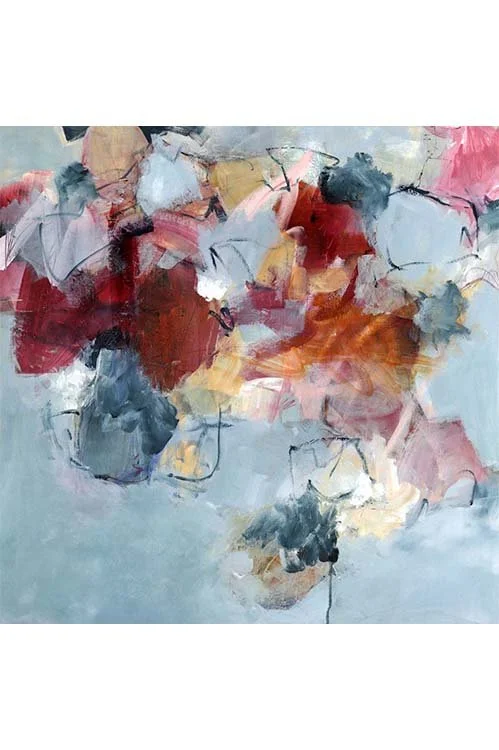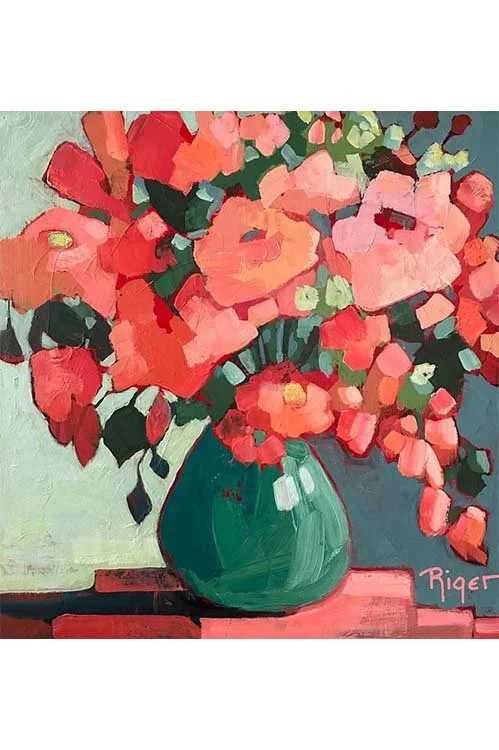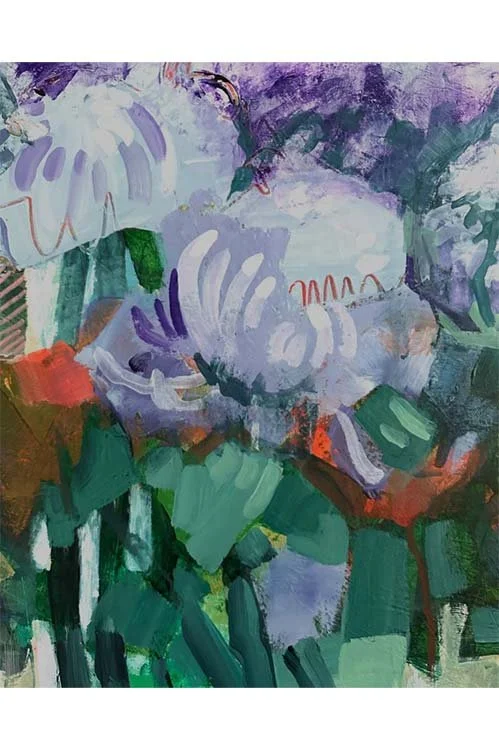 Image 1 of 8
Image 1 of 8

 Image 2 of 8
Image 2 of 8

 Image 3 of 8
Image 3 of 8

 Image 4 of 8
Image 4 of 8

 Image 5 of 8
Image 5 of 8

 Image 6 of 8
Image 6 of 8

 Image 7 of 8
Image 7 of 8

 Image 8 of 8
Image 8 of 8









Creative Abstract Florals (Online Course) Fall 2025 w/ Sue Riger
September 4 to September 25 (Thursdays), 10:00 AM to 12:30 PM, Eastern Time
**All sessions are live and will be recorded, students do not have to be present. All recordings will be available to students for 3 months after the final session, after 3 months the recording will be deleted.
Please check your email spam/junk folder for your Zoom invite. Our business hours are 10:00 AM through 5:00 PM. All course information and email correspondence will be sent during business hours. If students purchase a course, workshop, demo or recording outside business hours or during the weekend the course information or recording will be sent the following business day.
DEMO: https://youtu.be/FoI5JOb_oyg
Course Description
Brave, fun, and empowering! This course is designed to help you develop your unique painting style. Instead of following a rigid step-by-step method, you’ll explore intuitive techniques that unlock personal expression. Gain insider tips on color harmony, strong composition, self-critique, and creative breakout prompts that will inspire you long after the course is over.
Course Outline
Week 1 -
Building Strength through Simplicity
Developing a botanical vocabulary
Expressive light and color
Color harmony
Week 2 -
Deconstructing Elements of Successful Florals
Understanding the ellipse
Seeing the Essence, reduction to simplest forms
Methods of adding interest
Value is Everything even in abstracts
Week 3 -
ABCs of Composition
An Upside-Down World
It’s Elementary
Exploring prompts — a toolbox for the future
Week 4 -
Intuitive Foundations
It’s Playtime! Let your inner child have some fun!
Controlling the chaos
Self-critiquing methods that don’t hurt
Course Materials List
Supplies List
For this course, you can use what you have on hand. This is an extensive list of materials that you might like to try.
Acrylic Paints
I like Golden or Liquitex heavy bodied and/or fluid acrylic paint. You can use student grade paints to tone your canvas or board to save money. You may use what you have on hand. Choose one blue, one yellow, one red, plus titanium white. You can mix an orange or buy a tube of orange.You should experiment with colors that spark joy for you. Your palette becomes part of your signature style. Here’s one palette I will use for demonstrating:
Cadmium (or cadmium free) red medium
Cadmium (or cadmium free) yellow medium
Optional Cadmium (or cadmium free) orange
Pthalo Blue green shade
Titanium White
Quinacridone Magenta for extra fun
Payne’s Gray is another favorite, has indigo undertones
Pthalo blue is a very strong color that yields unnatural greens when mixed with yellow
unless you also add some red. I like the combination of Pthalo Blue and Cad Red because it produces a beautiful rich black.
Substrates
140 lb watercolor paper or a sketchbook suitable for acrylic paint
3 Gessoed canvases or cradled boards any size, at least one large 24” or up to 36” may be square or rectangular. Work with larger than you’re used to because it’s easier to paint loosely and freely on larger pieces.
Card Stock for printable color mixing worksheet
Sketching Tools
Vine charcoal (I like Soft), or charcoal pencil (recommended) and fixative (optional)
Degas Fixative is a non-toxic, non-aerosol pump bottle
Or your faves
Mediums
Matte medium and/or glazing medium
Fluid medium or pouring medium such as Liquitex Flow Aid additive
Gel medium
Retarder
Brushes and Mark Making Tools
Various sizes of flat brushes such as: Princeton Aspen (or your favorite brand) Long Handled Flat, various sizes such as 4, 6, 8… and bigger if you can afford it. Try to find brushes with very crisp edges with bristles tapering to a thin tip at the end of the brush.
Optional: a paddle brush with soft bristles. I love my 4” Mod Podge decoupage brush.
Optional: a cheap hardware store brush for painting the first layer (underpainting, toning)
Your favorite mark making tools such as a squeegee, plastic paint scraper, Catalyst Wedge, Silicon brushes (great for scaping paint away to reveal layers), Stabilo 3 in 1 Woody Crayons, pencils, For very fine lines a Fineline fine tip applicator bottle (I buy these empty and add watery paint with flow medium and water added.)
Mixing Palette such as a disposable palette paper pad or a stay wet palette
Spritz bottle (I love my Delta fine mist sprayer) or you can get mini travel misters at Target or at drug stores in the cosmetic department. At Target they are with the travel sized cosmetics.
Paper Towels or Rags
Water container, cups for mixing liquid paint
I will supply reference photos, but you may work from life if you prefer. Look for a variety of leaf shapes and avoid too many colors of flowers. I suggest 1-3 types of flowers.
September 4 to September 25 (Thursdays), 10:00 AM to 12:30 PM, Eastern Time
**All sessions are live and will be recorded, students do not have to be present. All recordings will be available to students for 3 months after the final session, after 3 months the recording will be deleted.
Please check your email spam/junk folder for your Zoom invite. Our business hours are 10:00 AM through 5:00 PM. All course information and email correspondence will be sent during business hours. If students purchase a course, workshop, demo or recording outside business hours or during the weekend the course information or recording will be sent the following business day.
DEMO: https://youtu.be/FoI5JOb_oyg
Course Description
Brave, fun, and empowering! This course is designed to help you develop your unique painting style. Instead of following a rigid step-by-step method, you’ll explore intuitive techniques that unlock personal expression. Gain insider tips on color harmony, strong composition, self-critique, and creative breakout prompts that will inspire you long after the course is over.
Course Outline
Week 1 -
Building Strength through Simplicity
Developing a botanical vocabulary
Expressive light and color
Color harmony
Week 2 -
Deconstructing Elements of Successful Florals
Understanding the ellipse
Seeing the Essence, reduction to simplest forms
Methods of adding interest
Value is Everything even in abstracts
Week 3 -
ABCs of Composition
An Upside-Down World
It’s Elementary
Exploring prompts — a toolbox for the future
Week 4 -
Intuitive Foundations
It’s Playtime! Let your inner child have some fun!
Controlling the chaos
Self-critiquing methods that don’t hurt
Course Materials List
Supplies List
For this course, you can use what you have on hand. This is an extensive list of materials that you might like to try.
Acrylic Paints
I like Golden or Liquitex heavy bodied and/or fluid acrylic paint. You can use student grade paints to tone your canvas or board to save money. You may use what you have on hand. Choose one blue, one yellow, one red, plus titanium white. You can mix an orange or buy a tube of orange.You should experiment with colors that spark joy for you. Your palette becomes part of your signature style. Here’s one palette I will use for demonstrating:
Cadmium (or cadmium free) red medium
Cadmium (or cadmium free) yellow medium
Optional Cadmium (or cadmium free) orange
Pthalo Blue green shade
Titanium White
Quinacridone Magenta for extra fun
Payne’s Gray is another favorite, has indigo undertones
Pthalo blue is a very strong color that yields unnatural greens when mixed with yellow
unless you also add some red. I like the combination of Pthalo Blue and Cad Red because it produces a beautiful rich black.
Substrates
140 lb watercolor paper or a sketchbook suitable for acrylic paint
3 Gessoed canvases or cradled boards any size, at least one large 24” or up to 36” may be square or rectangular. Work with larger than you’re used to because it’s easier to paint loosely and freely on larger pieces.
Card Stock for printable color mixing worksheet
Sketching Tools
Vine charcoal (I like Soft), or charcoal pencil (recommended) and fixative (optional)
Degas Fixative is a non-toxic, non-aerosol pump bottle
Or your faves
Mediums
Matte medium and/or glazing medium
Fluid medium or pouring medium such as Liquitex Flow Aid additive
Gel medium
Retarder
Brushes and Mark Making Tools
Various sizes of flat brushes such as: Princeton Aspen (or your favorite brand) Long Handled Flat, various sizes such as 4, 6, 8… and bigger if you can afford it. Try to find brushes with very crisp edges with bristles tapering to a thin tip at the end of the brush.
Optional: a paddle brush with soft bristles. I love my 4” Mod Podge decoupage brush.
Optional: a cheap hardware store brush for painting the first layer (underpainting, toning)
Your favorite mark making tools such as a squeegee, plastic paint scraper, Catalyst Wedge, Silicon brushes (great for scaping paint away to reveal layers), Stabilo 3 in 1 Woody Crayons, pencils, For very fine lines a Fineline fine tip applicator bottle (I buy these empty and add watery paint with flow medium and water added.)
Mixing Palette such as a disposable palette paper pad or a stay wet palette
Spritz bottle (I love my Delta fine mist sprayer) or you can get mini travel misters at Target or at drug stores in the cosmetic department. At Target they are with the travel sized cosmetics.
Paper Towels or Rags
Water container, cups for mixing liquid paint
I will supply reference photos, but you may work from life if you prefer. Look for a variety of leaf shapes and avoid too many colors of flowers. I suggest 1-3 types of flowers.
